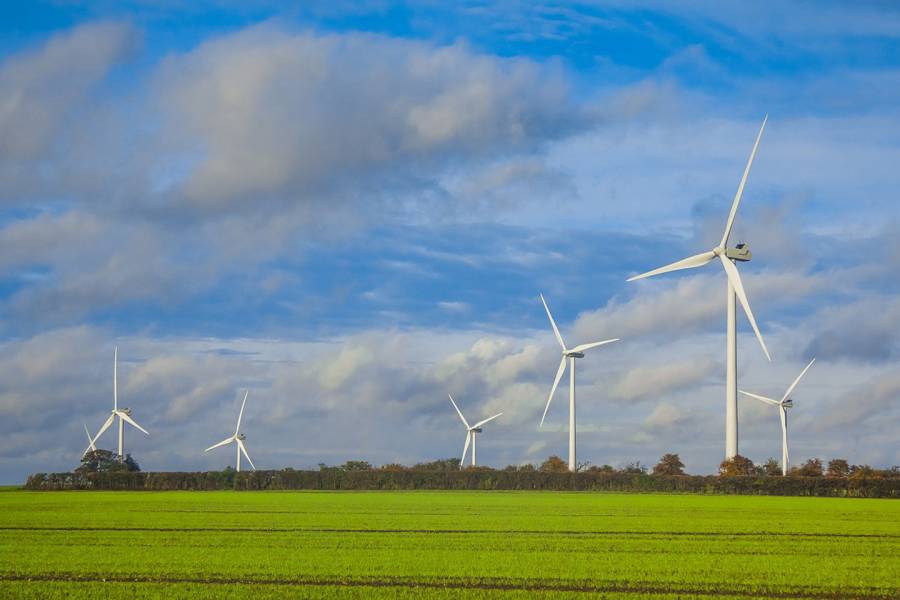Wind energy has the potential to serve a global demand for low-cost, clean energy. Research even suggests that wind could provide about half of the world's electricity by 2050. But while wind technology has evolved greatly in the past decade, a recent multi-institutional study proposes new recommendations that can drive the innovations needed for wind to become one of the world's primary sources of low-cost electricity.
In a paper published in Science, an international group of 29 wind energy experts including Johns Hopkins mechanical engineer Charles Meneveau outlined three scientific "grand" challenges that need to be addressed in order to harness wind power's full potential:
- A need for improved understanding of atmospheric and wind power plant flow physics
- The complicated aerodynamics, structural dynamics, and offshore wind hydrodynamics of enlarged wind turbines
- An underdeveloped process for optimizing fleets of wind power plants and integrating them into existing and future electricity infrastructures.
To overcome these challenges, the authors suggest a comprehensive research program across many disciplines, including engineering, physics, mathematics, atmospheric sciences, and oceanography.

Image caption: Charles Meneveau
Image credit: Will Kirk / Johns Hopkins University
"The emerging discipline of wind energy science is quite fascinating as it covers topics ranging from geophysical turbulent flows to the mechanics of gigantic machinery," said Meneveau. "Eiffel used rudimentary knowledge about wind speed distributions while designing the tower that bears his name. Now imagine the challenges of designing and building Eiffel Tower–sized devices with fast moving parts, the blades. The engineering and science research challenges involved in this field are unique."
Turbulence is a major challenge in wind energy systems because it directly affects the power output and reliability of wind turbines. Turbulence causes increased unsteady loads on the blades, thus increasing failure rates, but it also helps to transport the kinetic energy in the wind above the wind farm down to where turbines can extract the energy, thus increasing power production.
A major focus of Meneveau's research is simulating turbulent flow conditions across wind farms to better understand the combined effects of atmospheric turbulence and wind turbines. With this information, he and his team develop computational models that can be used to improve wind farm design and operations. For example, Meneveau and colleagues previously developed a model to calculate the optimal spacing between turbines for large, next-generation wind farms that may consist of hundreds or thousands of turbines.
The key takeaway is that large-scale deployment of wind energy systems will require combined insights from multiple disciplines. The authors suggest that more universities must invest in programs dedicated to wind energy research—a strategy already well underway at Johns Hopkins, according to Meneveau.
"Johns Hopkins already has robust wind energy efforts ranging from integrated wind farm control work by Dennice Gayme, piezoelectric wind harvesting by Rajat Mittal, electric power grid integration efforts by Enrique Mallada, economic optimization work by Ben Hobbs, and addressing tower structural issues by Ben Schafer."
Meneveau says it's important for people to understand that renewable energy is no longer a pipe dream—with additional research and exploration, it's possible for the world to run primarily on renewable energy like wind and solar power, he says.
In addition to Meneveau, the paper was written by researchers from the National Renewable Energy Laboratory and 19 other organizations. NREL is the U.S. Department of Energy's primary national laboratory for renewable energy and energy efficiency research and development.
Posted in Science+Technology
Tagged renewable energy, wind energy









